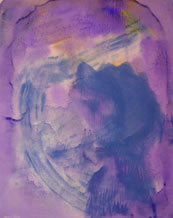Shiatsu was developed in Japan, and while it’s been influenced by a variety of healing practices and martial arts of Asia, including those of China, India, and Tibet, it makes a distinctly Japanese contribution to Asian bodywork. Shiatsu combines Japanese Anma massage, Ampuku abdominal massage, and Do-In therapeutic exercise techniques with insights from Western anatomy and physicaltherapy. Historically Japan was more actively engaged with the West than other Asian countries and thus more open to Western ideas.
Like other forms of Asian bodywork, Shiatsu is based on the principles of Chinese medicine and is designed to restore the flow of energy in the body. It’s known especially for its use of rhythmic pressure along energy channels. Practitioners lean their own body weight into the recipient’s body to improve energy flow and the circulation of blood and lymph.
The history of Shiatsu goes back to the 7th century AD, when a delegation of students was sent from Japan to China to study Chinese medicine and culture. Martial arts students, who frequently need to treat injuries or to revive an unconscious sparring partner, especially valued the knowledge they brought back.
Although Shiatsu traces its origins back to this earlier time, it acquired its unique characteristics only in the last century. It was during this time that Japan was more open to Western ideas than China, and there were two historical events in particular that shaped the development of Shiatsu.
The Japanese had been practicing their own style of Anma massage (similar to Tui Na) since the Edo Period (1602-1868). Around 1900, the government established licensing laws for practicing Anma. In part, this was a response to the increasing influence of scientifically based Western medicine, which the government hoped to encourage by these laws. There may also have been a desire to control Anma practitioners who had strayed into providing questionable forms of relaxation rather than therapeutic massage. In response to the new licensing laws, legitimate Anma practitioners began to call their work Shiatsu (which means “finger pressure”) and to emphasize the therapeutic benefits.
Following WWII, General Douglas MacArthur banned the practice of all traditional therapies in Japan, including acupuncture, moxibustion (burning mugwort on acupoints), and Shiatsu. Massage — including Shiatsu — was traditionally practiced by the blind in Japan, since it provided them with a livelihood, and their touch was considered especially sensitive. Shiatsu was eventually saved from the ban against traditional therapies when the Japanese Blind Association contacted Helen Keller. She petitioned President Truman, who overturned MacArther’s ban.
The threat to their livelihood motivated Shiatsu practitioners to downplay the origins of their work in traditional Chinese medicine. They increasingly described their work in Western medical terms and incorporated chiropractic and physical therapy techniques. These developments have led to the distinctive Shiatsu style we know today and also account for the variety of styles currently available.
There are three main styles or theoretical schools, each identified with an individual who provided the original distinctive focus: Namikoshi (Nippon style), Masunaga (Zen Shiatsu), and Serizawa (Acupressure Shiatsu).
Namikoshi’s style of Shiatsu is the one most often found in Japan. It places more emphasis on points than on energy channels, works the whole body (including stretches), and can be quite vigorous. Tokujiro Namikoshi established the Shiatsu Institute of Therapy in Hokkaido as early as 1925. He also founded the Japan Shiatsu Institute in 1940. He was concerned with the legal recognition of Shiatsu in Japan, which may account for his emphasis on Western medical theories. In addition to points, the emphasis of Nippon style Shiatsu is on the anatomical structure of the body — the muscles and bones — and the nervous system.
Shizuto Masunaga reintroduced the more traditional roots of Shiatsu, including energy meridians and Five Element theory. Masunaga, who was born into a family of Shiatsu practitioners, was interested in western psychology. He became a professor of psychology at Tokyo University and also taught psychology at Namikoshi’s Shiatsu school. In addition to valuing Chinese medicine, he was very interested in emotional, psychological, and spiritual development. This led to his creation of Zen Shiatsu.
Practitioners of Zen Shiatsu strive to maintain a meditative, intuitive state, allowing them to connect deeply with their clients and to detect changes in the body during the session. Zen Shiatsu practitioners see Shiatsu as a means of personal development, giving meaning and purpose to life, both for the client and the practitioner.
Katsusuke Serizawa, a student of physical therapy, Shiatsu, and Chinese medicine, was especially interested in a scientific explanation of the energy meridians. The focus of his studies was on acupoints or (as they’re called in Japanese) Tsubos. His research and extensive publications emphasize the change in electrical resistance of the skin over a tsubo point. He was especially interested in demonstrating the therapeutic benefits of Shiatsu in terms that were acceptable to modern scientific thinking. The western form of Serizawa’s Tsubo Therapy is called Acupressure Shiatsu and is not as widely known as Nippon and Zen styles.
Shiatsu first began to attract Western interest in the 1970’s, following President Nixon’s visit to China. Japanese friends tell me that in Japan Shiatsu is popular only with older people, but in the West — both the US and Europe — Shiatsu is probably the most well-known style of Asian bodywork and is popular with all ages. One other difference between Shiatsu in Japan and in the West is that it’s become traditional in the West to practice Shiatsu on the floor, whereas this is rarely the case in Japan.

